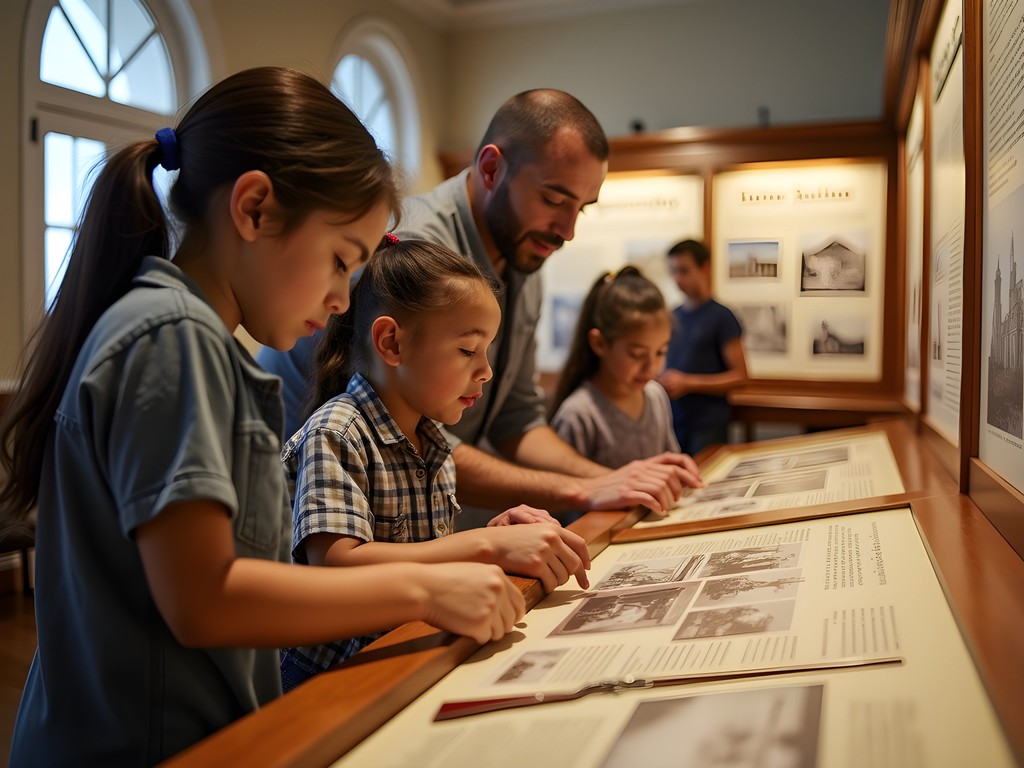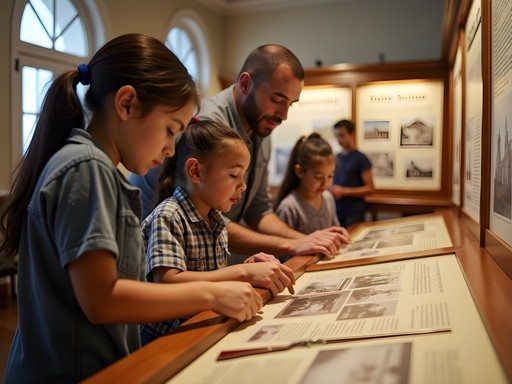Disclosure: This article contains affiliate links. We may earn a commission from purchases at no extra cost to you, which helps our travel content.
Standing on the weathered ramparts of Fort Monroe, watching the Chesapeake Bay shimmer under the spring sunshine, I couldn't help but feel the weight of history beneath my feet. As someone who typically chases astronomical phenomena across mountainous terrain, this flat coastal Virginia landscape initially seemed an unlikely destination. Yet Hampton—one of America's oldest continuously settled English communities—holds Civil War stories so compelling they transcend the landscape's modest topography. My technical writer's mind was immediately captivated by how this small coastal city functioned as a pivotal crossroads during America's most divisive conflict.
Fort Monroe: The 'Freedom Fortress'
Fort Monroe stands as Hampton's crown jewel of Civil War history, a massive stone hexagon surrounded by a moat that feels transplanted from medieval Europe rather than coastal Virginia. Despite having explored fortifications across four continents, I found myself genuinely impressed by this engineering marvel completed in 1834.
What truly distinguishes Fort Monroe isn't its imposing architecture but its nickname—'Freedom's Fortress'—earned in 1861 when three enslaved men sought refuge here. Union General Benjamin Butler's decision to declare them 'contraband of war' rather than return them to Confederate owners created a precedent that eventually led thousands of enslaved people to seek freedom within these walls.
The Casemate Museum inside the fort offers remarkable context through artifacts and meticulously preserved quarters, including those where Confederate President Jefferson Davis was imprisoned after the war. While exploring the museum's climate-controlled interior, my moisture-wicking shirt proved invaluable when transitioning between the humid spring air outside and the cool museum interior.
I spent nearly three hours exploring the fort's ramparts, watching sailboats drift across the bay while contemplating how this massive stone structure represented both military might and hope for the enslaved. The juxtaposition reminded me of Korea's DMZ—another place where military installations paradoxically became symbols of potential freedom.

💡 Pro Tips
- Visit the Casemate Museum first for historical context before exploring the fort grounds
- The fort has surprisingly limited shade—apply sunscreen generously and bring a hat
- Download the free Fort Monroe audio tour before arriving for deeper insights at each stop
Emancipation Oak: Living Monument to Freedom
Just a short drive from Fort Monroe stands what might be Hampton's most powerful Civil War landmark: the Emancipation Oak. This sprawling 300-year-old southern live oak with branches spanning over 100 feet would be impressive based on size alone. However, its historical significance elevates it to something approaching sacred ground.
In 1863, the first Southern reading of the Emancipation Proclamation occurred beneath these very branches, forever transforming this tree into a living monument to freedom. Standing beneath its massive canopy, I found myself calculating the astronomical odds that this specific organism would witness such a pivotal moment in human history.
The oak sits on the campus of Hampton University, itself established to educate formerly enslaved people. I spent a contemplative hour sitting beneath its branches, using my pocket field notebook to sketch the tree's remarkable silhouette and jot down the complex emotions this place evoked.
Visiting during spring meant witnessing the oak draped in fresh green leaves and surrounded by blooming dogwoods and azaleas—nature's own commemoration of renewal and freedom. The university maintains the grounds beautifully, making this a perfect spot for families to discuss complex history in a setting that feels hopeful rather than somber.

💡 Pro Tips
- Visit early morning or late afternoon when the sunlight filters beautifully through the oak's massive branches
- The oak is on Hampton University campus—be respectful of students and academic activities
- Bring a blanket to sit beneath the tree and absorb the historical significance
Downtown Hampton's Civil War Landmarks
Hampton's compact downtown area offers a surprisingly rich concentration of Civil War sites within easy walking distance—perfect for families with varying energy levels. The self-guided Civil War walking tour (free maps available at the Hampton Visitor Center) connects sites that survived the August 1861 burning of Hampton, when Confederate forces torched their own town rather than let Union troops utilize it.
St. John's Episcopal Church stands as perhaps the most poignant stop. Only its blackened walls survived the 1861 fire, yet it was painstakingly rebuilt using those same scorched walls—a powerful metaphor for national reconstruction. The church cemetery contains graves of both Union and Confederate soldiers, a somber reminder of the conflict's human cost.
For families with children, I highly recommend the historical scavenger hunt kit which turns historical exploration into an engaging game. I watched several families using similar activities, their children excitedly racing between landmarks to complete challenges while absorbing history almost by osmosis.
The Hampton History Museum provides excellent context through its Civil War exhibits, including interactive displays that even captured my attention despite my usual preference for more technical information. Their collection of period photographs showing Hampton before and after the 1861 burning offers stark visual evidence of war's devastation in a way children can readily comprehend.

💡 Pro Tips
- Start at the Hampton Visitor Center for free walking tour maps and current opening hours
- St. John's Episcopal Church welcomes visitors outside service times—check their website for hours
- The full downtown walking tour takes about 2-3 hours, but can be easily shortened for younger children
Contrabands and Freedmen's Cemetery
Perhaps Hampton's most overlooked Civil War site is the Contrabands and Freedmen's Cemetery—a place that affected me more deeply than I anticipated. Established in 1863, this burial ground holds the remains of formerly enslaved people who sought freedom behind Union lines only to succumb to disease and hardship in the refugee camps that sprang up around Fort Monroe.
After decades of neglect and even desecration (a gas station was built over part of the cemetery in the 1950s), community efforts led to its restoration and dedication as a memorial in 2014. Today, a contemplative park marks the site, with bronze sculptures and interpretive panels telling the stories of those who experienced this tumultuous transition from slavery to freedom.
Visiting at dawn with my insulated travel mug filled with strong tea, I had the memorial to myself. The morning light illuminated the name tablets while birds sang overhead—a peaceful moment to reflect on lives caught in history's turbulent currents. As a technical writer accustomed to documenting precise details, I found myself deeply moved by the memorial's attempt to restore individual identities to people who were so often reduced to statistics.
For families, this site offers an opportunity to discuss difficult history in a setting designed for reflection rather than sensationalism. The memorial's design is accessible to visitors of all ages, with concrete details that help younger visitors connect to abstract historical concepts.

💡 Pro Tips
- Visit early morning or evening when the memorial is quietest and most contemplative
- The memorial is entirely outdoors—dress for weather conditions
- Take time to read the individual names on memorial tablets—restoring identity is part of the site's purpose
Family-Friendly Historical Activities and Accommodations
Hampton excels at making Civil War history accessible to younger visitors through hands-on activities. The Casemate Museum offers excellent children's programming, including 'History Detective' backpacks filled with period-appropriate items that can be borrowed during visits. These tactile experiences help children connect with abstract historical concepts through physical objects.
For accommodation, I chose the budget-friendly historic bed and breakfast located centrally to all sites. While not historically significant itself, its location allowed me to walk to most downtown sites and drive just minutes to Fort Monroe and Hampton University.
To maximize the educational value of your visit, I recommend the family history journal which provides thoughtful prompts for children to record their observations and feelings about historical sites. I spotted several families using similar journals, creating meaningful souvenirs while deepening their children's engagement with history.
The Hampton Carousel, while not Civil War-related, provides a perfect activity break between historical sites. This meticulously restored 1920s carousel features hand-carved wooden horses and offers children a glimpse of early 20th century entertainment—another layer of living history to complement the Civil War sites.

💡 Pro Tips
- Request the 'History Detective' backpacks at the Casemate Museum visitor center—they're free but limited in quantity
- Schedule historical sites in the mornings and lighter activities like the carousel for afternoons when attention spans may wane
- The Hampton History Museum offers special weekend programs for families—check their calendar before planning your visit
Final Thoughts
As I watched the sun set behind Fort Monroe on my final evening in Hampton, I reflected on how this compact coastal city offers such a concentrated dose of pivotal American history. While I typically seek out destinations with dramatic landscapes or astronomical significance, Hampton reminded me that history itself creates its own profound topography—one measured not in elevation but in human experience.
What makes Hampton's Civil War sites particularly valuable for families is their accessibility—both physically and intellectually. Complex historical events are presented through tangible locations, personal stories, and thoughtful interpretation that visitors of all ages can grasp. The city has done remarkable work preserving sites that tell a more complete Civil War narrative, including perspectives often overlooked in mainstream historical accounts.
As you plan your own Hampton historical adventure, remember that these sites aren't just about the past—they're about understanding how that past shaped the present. The freedom sought at Fort Monroe, proclaimed under the Emancipation Oak, and commemorated at the Contrabands Cemetery represents an ongoing American journey. By walking these grounds with your family, you're not just learning history—you're participating in it.
✨ Key Takeaways
- Hampton's compact size makes it perfect for a weekend historical exploration with minimal travel between sites
- Fort Monroe, the Emancipation Oak, and downtown Hampton can all be visited in a single weekend
- Spring offers ideal weather and beautiful blooming landscapes that complement the historical experience
📋 Practical Information
Best Time to Visit
March through May
Budget Estimate
$150-$300 per family for a weekend (excluding accommodations)
Recommended Duration
2-3 days
Difficulty Level
Easy
















Comments
backpackdiver
Is it possible to do all these sites in one day? Planning a quick weekend trip.
greenway
Not the original poster, but I did it in one full day last fall. Start early at Fort Monroe (2-3 hours), then Emancipation Oak (30 min), downtown sites (2 hours), and cemetery (1 hour). It's doable but rushed!
Hunter Thompson
ABSOLUTELY BRILLIANT post, Olivia! Spent three days in Hampton last summer during my East Coast heritage tour and was blown away by how much history is packed into this small city. Fort Monroe was the highlight - the moat, the stone walls, the Casemate Museum with Jefferson Davis's cell! The contrast between its military purpose and its role in emancipation makes it such a fascinating place. Pro tip for anyone going: catch sunset from the ramparts facing the Chesapeake Bay - absolutely stunning views and perfect for reflection. Hampton doesn't get nearly enough credit compared to nearby Williamsburg and Yorktown, but it's equally important to understanding American history!
adventurestar
Just visited Hampton last month and followed almost this exact route! The Emancipation Oak was so much more moving in person than I expected. Standing under those massive branches where the first Southern reading of the Emancipation Proclamation took place gave me goosebumps. We also spent time at the Contrabands and Freedmen's Cemetery which was a sobering but important stop. One tip: wear comfortable shoes as there's quite a bit of walking between sites. I used my walking guide which had some additional context beyond the official markers.
backpackdiver
How accessible would you say these sites are for someone with mobility issues? My mom uses a walker occasionally but loves history.
adventurestar
Fort Monroe has good accessibility with paved paths, though some areas have cobblestones. The Emancipation Oak area is flat and accessible. Downtown varies but mostly manageable. I'd call the visitor center first - they were super helpful with planning!
redguy
Great photos! That Emancipation Oak is incredible.
greenway
Love this! Hampton is so underrated for history buffs. Fort Monroe has been on my bucket list forever.
Taylor Moreau
You absolutely must visit Fort Monroe. I was there on business last year and managed to squeeze in a tour. The historical significance is profound, especially regarding the contraband decision.
greenway
Thanks for the encouragement! Did you need a guided tour or is it easy to self-navigate?
Taylor Moreau
Self-guided is quite manageable with the free maps available at the visitor center, but the guided tours offer much richer context. Well worth the modest fee.
wanderperson
That sunset photo of Fort Monroe is stunning! 📸👌
summervibes
Just got back from Hampton and followed your itinerary - it was PERFECT!! The Emancipation Oak was so much more moving in person than I expected. Those branches spreading out gave me goosebumps thinking about the first reading of the Emancipation Proclamation happening right there. We also stumbled on a small exhibition about Harriet Tubman's connection to Fort Monroe that wasn't mentioned here - apparently she worked with Union forces there as a scout! The ranger recommended Civil War history book which I'm reading now and it adds so much context to what we saw. Thanks for inspiring our trip!
backpacknomad
This looks amazing! Going to be in the area next month - is it better to do a guided tour or self-guided with your blog post? And how long did the whole walking tour take you?
backpackstar
Not the author but I did this tour last year! Definitely get the guided tour at Fort Monroe - the rangers know so many fascinating stories that aren't on the plaques. The rest you can do self-guided. Took us about 5 hours with lunch break!
backpacknomad
Thanks so much! Will definitely book the ranger tour then.
Taylor Moreau
Olivia, this is a wonderfully comprehensive guide to Hampton's Civil War sites. I visited Fort Monroe last autumn while on business in Virginia and was equally moved by its historical significance. The Casemate Museum was particularly enlightening - seeing Jefferson Davis's cell brings that period to life in a way textbooks cannot. I would add that visitors should allocate at least 3 hours for Fort Monroe alone if they wish to truly appreciate both the museum and the fortifications. Have you considered writing about the architectural evolution of these coastal defenses? I find the engineering aspects fascinating.
summervibes
Was Fort Monroe accessible for someone with mobility issues? My mom uses a walker but loves history.
Taylor Moreau
Good question! The Casemate Museum has wheelchair access to most areas, though some of the older fortification sections have uneven surfaces. I'd recommend calling ahead as they do offer accessibility accommodations for visitors with mobility challenges.
wanderperson
Wow, I had no idea Hampton had so much Civil War history! Definitely adding this to my list.
Venture X
Premium card with 2X miles, $300 travel credit, Priority Pass